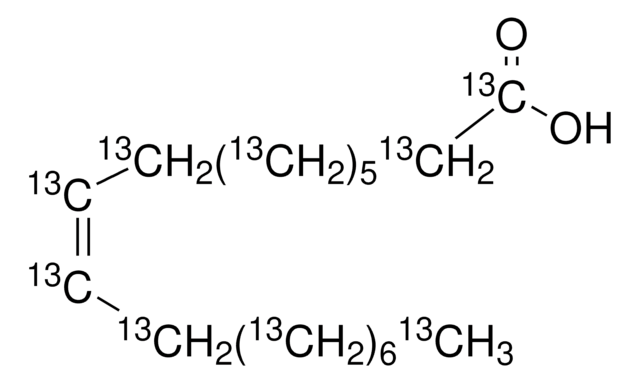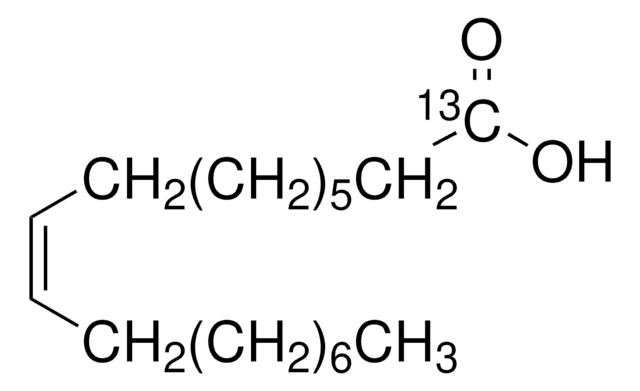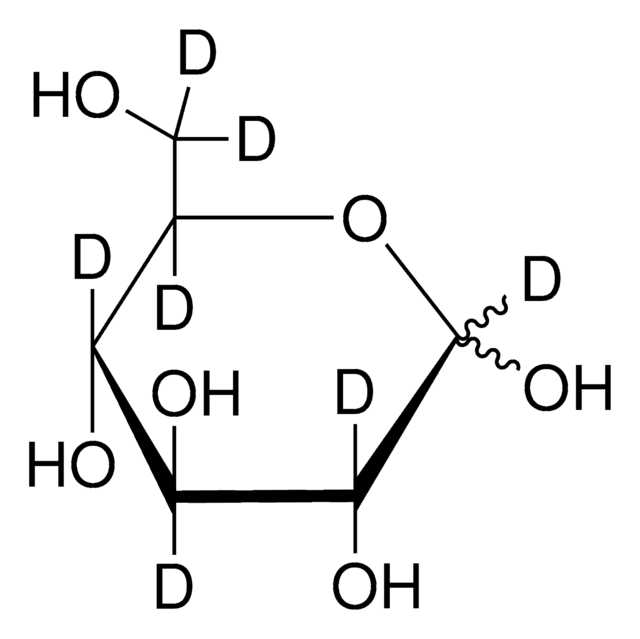About This Item
Recommended Products
isotopic purity
98 atom % D
Quality Level
Assay
99% (CP)
form
liquid
bp
192-195 °C/1.2 mmHg (lit.)
mp
13.4 °C (lit.)
density
0.996 g/mL at 25 °C
mass shift
M+34
storage temp.
−20°C
SMILES string
[2H]OC(=O)C([2H])([2H])C([2H])([2H])C([2H])([2H])C([2H])([2H])C([2H])([2H])C([2H])([2H])C([2H])([2H])C(\[2H])=C(\[2H])C([2H])([2H])C([2H])([2H])C([2H])([2H])C([2H])([2H])C([2H])([2H])C([2H])([2H])C([2H])([2H])C([2H])([2H])[2H]
InChI
1S/C18H34O2/c1-2-3-4-5-6-7-8-9-10-11-12-13-14-15-16-17-18(19)20/h9-10H,2-8,11-17H2,1H3,(H,19,20)/b10-9-/i1D3,2D2,3D2,4D2,5D2,6D2,7D2,8D2,9D,10D,11D2,12D2,13D2,14D2,15D2,16D2,17D2/hD
InChI key
ZQPPMHVWECSIRJ-PRLROCHISA-N
Packaging
Storage Class Code
10 - Combustible liquids
WGK
WGK 1
Flash Point(F)
Not applicable
Flash Point(C)
Not applicable
Choose from one of the most recent versions:
Already Own This Product?
Find documentation for the products that you have recently purchased in the Document Library.
Customers Also Viewed
Our team of scientists has experience in all areas of research including Life Science, Material Science, Chemical Synthesis, Chromatography, Analytical and many others.
Contact Technical Service











